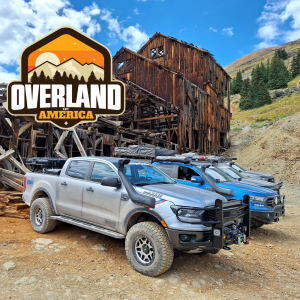Bronco648
Well-Known Member
- Joined
- May 23, 2019
- Messages
- 401
- Vehicle Year
- 2011
- Engine
- 2.3 (4 Cylinder)
- Transmission
- Automatic
- Tire Size
- 15"
I'm in the process of putting an '85 RCLB back together.
I have a newly rebuilt 2.8 V6. I spun the engine with the starter to get oil circulating. I could not get any pressure to register on the gauge. I verified that I am getting oil to the heads (by popping off the passenger side valve cover). I verified that the gauge works by testing the wiring per the shop manual. I am on my second, new oil pressure sending unit (can two be bad?).
I started the engine and it runs nicely. I watched the oil pressure gauge jump to the upper end of the scale and then slow sink all the way down, until the needle bottomed. The engine has not run for more than a minute or two. It's got an open y-pipe but I cannot hear any noises that would indicate a lack of oil pressure. I removed the passenger side valve cover again and verified there's more oil up by the rockers but I don't know how much oil to expect.
I'm hesitant to run the engine more for fear of ruining bearings/cam, etc.
What else can I do to verify oil pressure? I needed this truck to be running and road-ready about a month ago. I'm getting sick of not making any progress. TIA.
UPDATE: After re-installing the passenger side valve cover, I can see oil on the rockers, it's pooled on the keepers and it's pooled on that sheet metal 'tray' that sits between the rocker assembly and the head (it seems to be there to re-direct oil to the push rod holes to facilitate oil draining back to the sump). I can also see where oil has been flung onto the underside of the valve cover, from two or three of the rockers. Is that sufficient? Am I expecting there to be too much oil in the area under the valve cover?
I have a newly rebuilt 2.8 V6. I spun the engine with the starter to get oil circulating. I could not get any pressure to register on the gauge. I verified that I am getting oil to the heads (by popping off the passenger side valve cover). I verified that the gauge works by testing the wiring per the shop manual. I am on my second, new oil pressure sending unit (can two be bad?).
I started the engine and it runs nicely. I watched the oil pressure gauge jump to the upper end of the scale and then slow sink all the way down, until the needle bottomed. The engine has not run for more than a minute or two. It's got an open y-pipe but I cannot hear any noises that would indicate a lack of oil pressure. I removed the passenger side valve cover again and verified there's more oil up by the rockers but I don't know how much oil to expect.
I'm hesitant to run the engine more for fear of ruining bearings/cam, etc.
What else can I do to verify oil pressure? I needed this truck to be running and road-ready about a month ago. I'm getting sick of not making any progress. TIA.
UPDATE: After re-installing the passenger side valve cover, I can see oil on the rockers, it's pooled on the keepers and it's pooled on that sheet metal 'tray' that sits between the rocker assembly and the head (it seems to be there to re-direct oil to the push rod holes to facilitate oil draining back to the sump). I can also see where oil has been flung onto the underside of the valve cover, from two or three of the rockers. Is that sufficient? Am I expecting there to be too much oil in the area under the valve cover?
Last edited:













